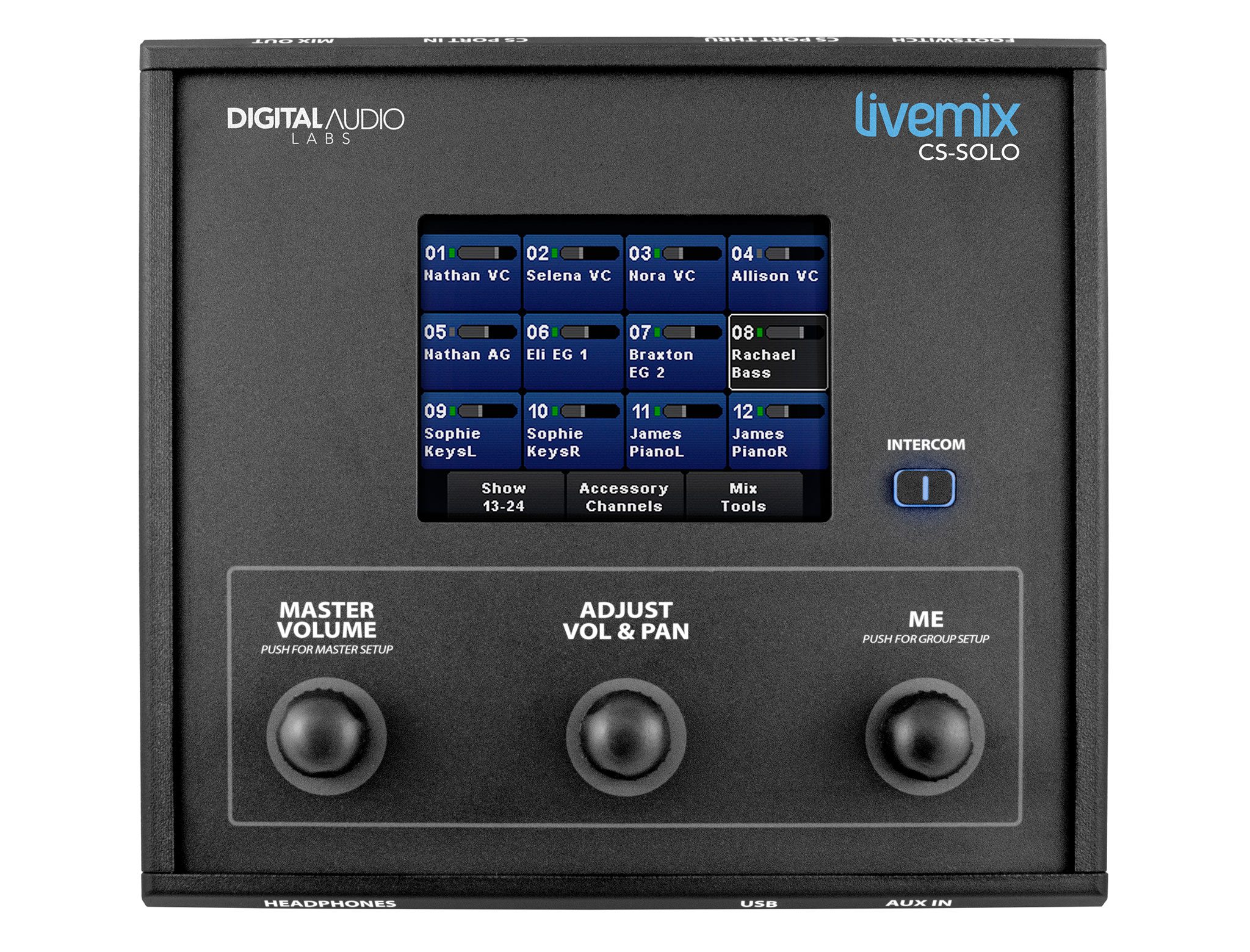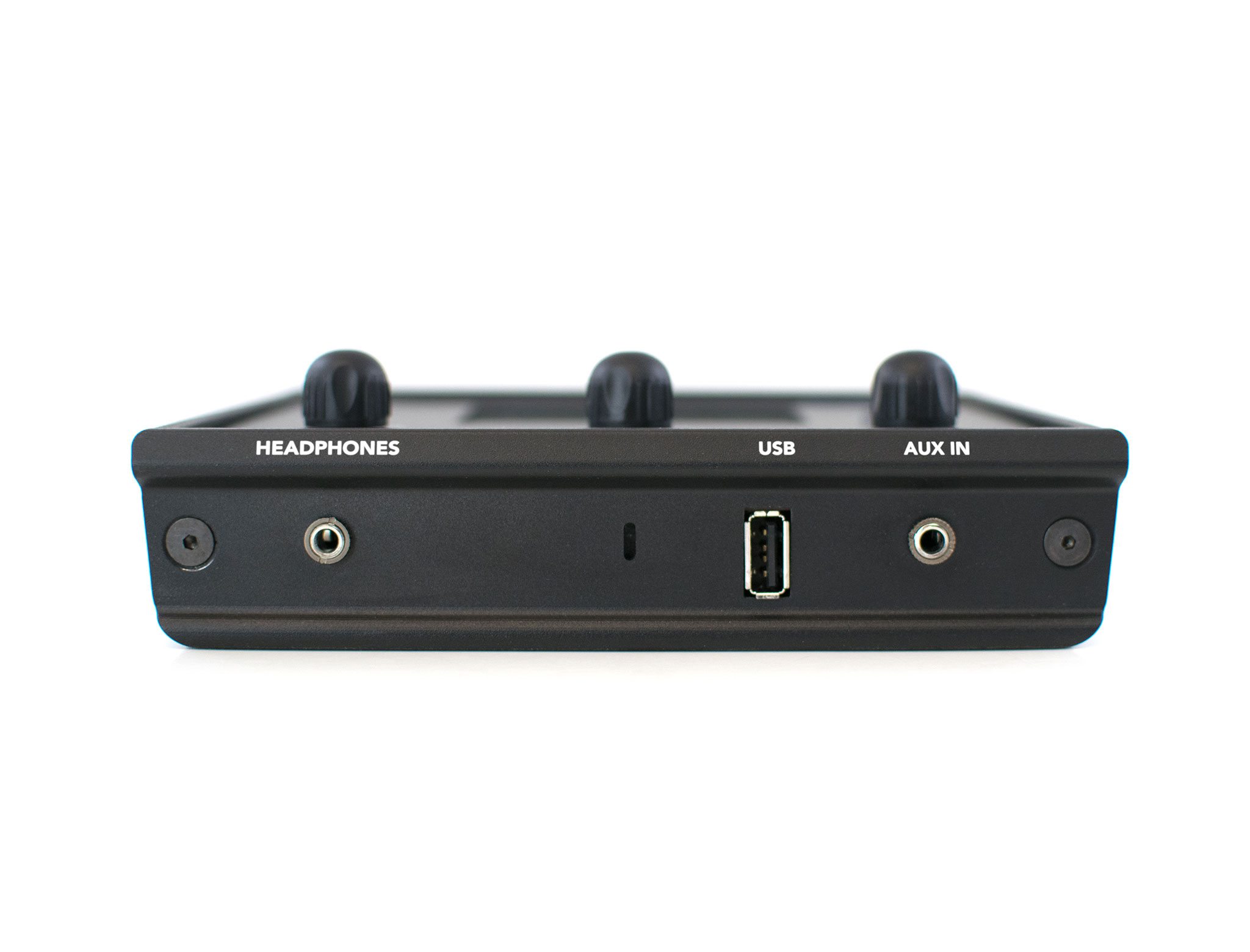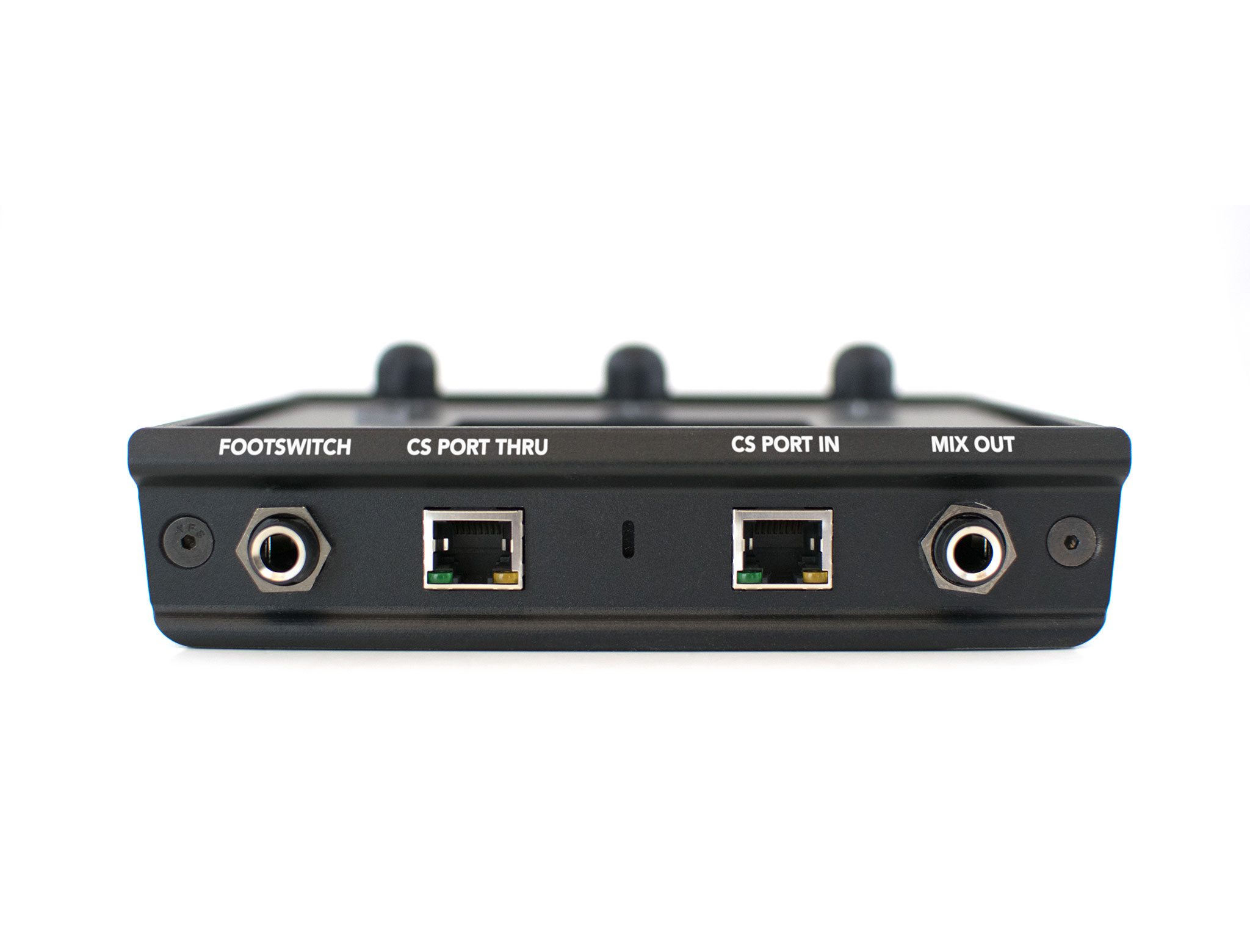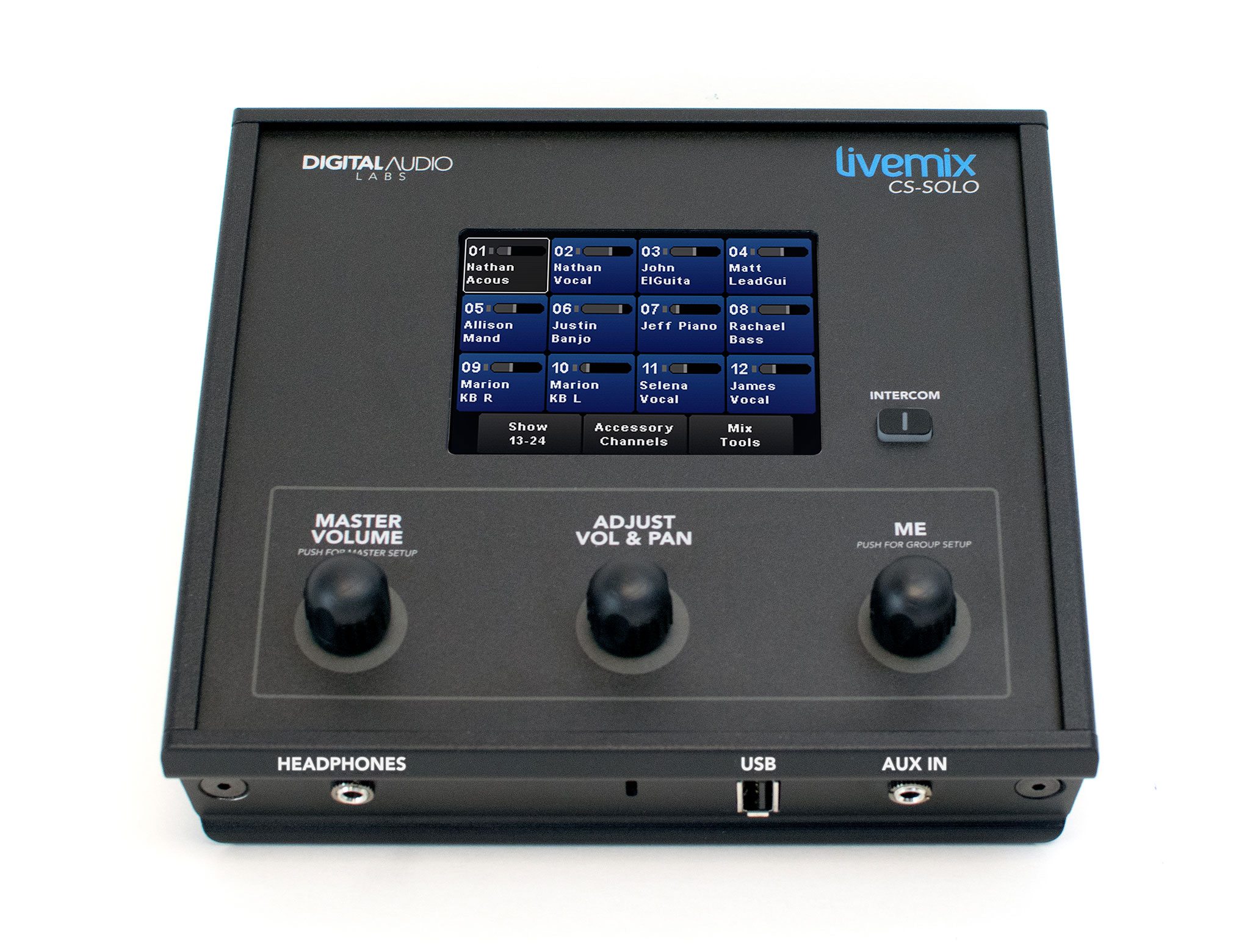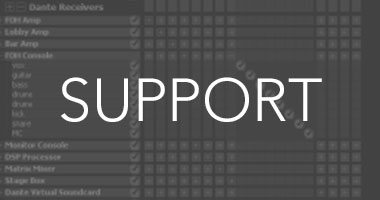Make a great personal mix with the Livemix CS-SOLO, the most feature rich personal mixer on the market. The LCD touchscreen with custom naming makes creating a mix easy. Dedicated knobs provide quick access to essential features. The CS-SOLO provides 24 channels plus accessory channels, each with EQ and compression. The master output features EQ, compression and reverb.
MirrorMix® remote setup and mixing, mute and solo options, channel grouping and LCD dimming make the Livemix system deep enough for professionals, but simple enough for volunteers. To maximize stage mixes, connect two CS-SOLO units to a single port on the MIX-16 or MIX-32. The first personal mix is the blue “A Mix” while the second personal mixer unit will be the red “B Mix”. Power and audio is supplied to the second CS-SOLO over a network cable connected to the CS-SOLO THRU port.
FEATURES
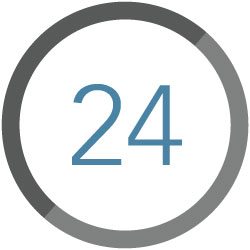
24 Channels + 4 Accessory Channels
While most personal mixers give you 16 total mixable channels, Livemix offers 24 plus additional accessory channels. With Stereo Pairs and built-in Groups, it’s easy to build true stereo pairs and multi-channel groups.

Simple To Use
Making a personal mix is much easier when you can “turn up Sasha” or “turn down the bass” and not try to remember who is on what channel. With a color LCD touchscreen with custom names, scribble strips and guessing is a thing of the past. Dedicated knobs for adjustments, your own channel group and master volume make mixing simple and intuitive.

Crystal Clear Headphone Amplifier
The headphone amplifier on Livemix will drive nearly any impedance and give you incredible space and tonal separation. This makes creating a personal mix easier as channels on other systems can tend to “smear” or “get muddy”.

EQ, HPF, & Dynamics on Every Channel
Effects presets for each instrument type help make mix setup simple. You can also bypass the presets and edit each effect directly. The effects in Livemix are global so that you only have to set them up once and everyone gets an incredible sounding personal mix.
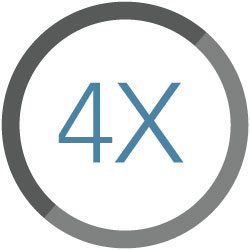
Built-in Accessory Channels
In addition to the 24 input channels, Livemix boasts 4 accessory channels. Built-in ambient mics helps musicians locate themselves on stage when using in-ear monitors. The intercomm allows team communication and the auxillary input can connect to a media player for practicing songs or for tracks. The built-in metronome helps everyone stay on time.

Remote Mixing and Intercom
MirrorMix® remote mixing lets anyone get help when they need it. Any personal mixer can audition and mix any other mix. Push out a good starter mix to all mixers at once with Global MirrorMix®. In MirrorMix® mode, the built-in intercom is direct to the target mixer for easy confirmation and communication.
DOWNLOADS
Please visit the Support page for the latest firmware downloads.
| LIVEMIX CS-SOLO | ||
|---|---|---|
| Output Power & THD+N | @22Ω | 200mW @ 1% THD+N |
| 100mW @ .03% THD +N | ||
| @32Ω | 250mW @ 1% THD+N | |
| 100mW @ .014% THD +N | ||
| @64Ω | 250mW @ 1% THD+N | |
| 100mW @ .005% THD +N | ||
| @300Ω | 130mW @ 1% THD+N | |
| 100mW @ .003% THD +N | ||
| Frequency Response | 20 Hz – 22 kHz ± 3 dB | |
| S/N Ratio | 103 dB | |
| Input Impedance (Aux In) | 7.5 kΩ | |
| Crosstalk (Left to Right) | -103 dB | |
| Max Cable length from MIX-16 | 100m CAT5e cable (shielded recommended) |
|
| Filter Q | High Pass & Low Pass | .707 |
| Peak/Dip | 1.2 | |
| Filter Cut/Boot Amount | ± 6 dB | |
| Ambient Mic Gain | 25 dB | |
Shielded cable is required for connecting both the AD-24 and the DA-816 to the MIX-16 or MIX-32. Shielded cable is not required for connecting a CS-SOLO or CS-DUO to the MIX-16/32 or connecting the LM-DANTE card to the Dante network. However, shielded is recommended.
As of Livemix version 4.0, the Dante Controller is required for setting up Livemix on the Dante Network. Versions prior to 2.15 do not require the Dante Controller, although it’s use is recommended. You will also need to use Dante Controller to set the Master Clock for the Dante Network. See the LM-DANTE User Guide pg. 8 for assigning Dante Channels.
Livemix works with either analog or digital (Dante) input. With the AD-24 analog input unit you can connect TRS or DB25 connectors from your console or recording interface. For a Digital connection with Dante, plug directly into a switch. For other digital formats (MADI), you may need a format converter.
We recommend to make the Master clock the console or Dante card in the console. NOTE: There are two ways this can be done. 1) Set the console’s internal clock as Master, then using Dante Controller, set the console’s Dante card as Master clock (for the Dante Network) and also check box “Sync to External”. This will allow the card to stay synched to the console’s master clock. 2) Set the console’s internal clock to be slave of the console’s Dante card. Using Dante controller, set the console’s Dante card as Master clock.
